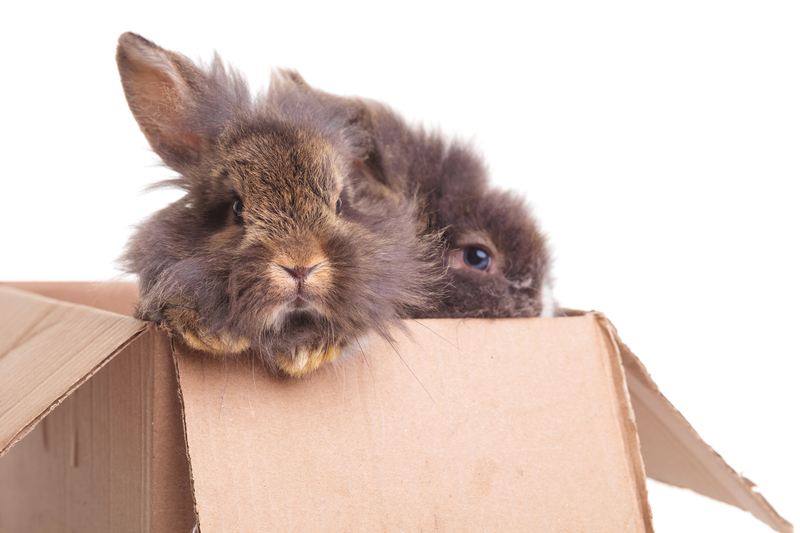The Science of Packing for a Successful House Move
Posted on 14/06/2025
The Science of Packing for a Successful House Move
Moving house is often considered one of life's most stressful experiences. However, by approaching it with a methodical, science-backed strategy, anyone can transform a daunting relocation into a seamless transition. In this article, we'll dive deep into the science of packing for a successful house move--from understanding the psychology of decluttering to leveraging expert packing techniques and materials.
Why Focus on Packing Science?
Optimal packing goes beyond simply shoving belongings into boxes. The science behind packing for a house move encompasses physics, organization, psychology, and logistics. By employing a systematic approach, you'll protect your possessions, save time, reduce moving costs, and minimize stress. Let's unpack the secrets of a successful house move.

Understanding the Core Principles of Packing
Principle #1: Declutter Before You Pack
Moving is the perfect opportunity to evaluate what you truly need. The less you transport, the easier and more cost-effective your move. According to behavioral psychologists, clutter increases stress levels. Begin by:
- Sorting your possessions into categories: keep, donate, sell, recycle, toss
- The KonMari method: Keep only items that "spark joy"
- Hosting a pre-move garage sale or listing items online
By letting go of unnecessary items, you lay the foundation for an efficient packing process.
Principle #2: Gathering Quality Packing Materials
The right materials are crucial for packing your house for a successful move. You'll need:
- Sturdy boxes of various sizes (small, medium, large, specialty)
- Bubble wrap or packing paper for fragile items
- High-quality packing tape
- Permanent markers and color-coded labels
- Stretch wrap for securing furniture and drawers
Tip: Invest in specialty containers such as wardrobe boxes, dish barrels, and TV crates to protect valuable or delicate items.
Principle #3: Create a Packing Timeline
The key to efficient house move packing is to start early. Break down the process with a realistic, science-driven timeline:
- 6-8 weeks before: Declutter and start packing rarely used rooms (attic, basement, garage)
- 4 weeks before: Box up out-of-season clothing, books, decor
- 2 weeks before: Focus on everyday spaces, keep essentials set aside
- 1 week before: Pack kitchen, bathroom, and last-used essentials
- Moving day: Pack your essentials kit for immediate needs
A packing timeline reduces last-minute rush, making the move less overwhelming.
Packing Strategies Backed by Science
The Physics of Smart Packing
The goal isn't just to fit everything into boxes--it's to maximize protection and efficiency. Here are some science-based tips:
- Distribute weight: Pack heavy items (books, tools) in small boxes, lighter items in large ones
- Fill gaps: Use towels, linens, or packing peanuts to fill voids and prevent shifting
- Layer smartly: Create cushion layers at the bottom, fragile items in the center, and additional padding above
- Stack by strength: Place heaviest boxes on the bottom when loading the truck
Applying basic physics helps avoid box collapse and damage during transport.
The Psychology of Labeling and Organization
Cognitive studies show our brains are comforted by structured systems. Labeling every box with its room and a summary of contents helps:
- Speed up unloading at the new house
- Reduces anxiety from uncertainty
- Prevents guesswork and time-wasting
Try color-coding labels by room for faster identification, and number each box for easy reference. Consider maintaining a digital inventory list for extra peace of mind.
Protecting Fragile and Valuable Items
The science of packing fragile items revolves around creating layers of protection and absorbing shock. Use these techniques:
- Glassware: Wrap each piece individually using two layers, placing crumpled paper inside and around
- Plates: Stack vertically with pads between, not flat, to minimize breakage risk
- Electronics: Repack with original foam inserts, or wrap in anti-static bubble wrap
- Artwork/Mirrors: Use cardboard corners, wrap in padded blankets, mark as FRAGILE
Remember: Wasted space is dangerous space--always pack boxes tightly.
The Ultimate Room-by-Room Packing Guide
1. Kitchen Packing Science
- Start with rarely-used gadgets and utensils
- Use cell kits or dish barrels for glassware and ceramics
- Seal food items in airtight bags or containers to prevent spills
- Defrost, clean, and dry appliances 24 hours in advance
2. Living Room and Bedrooms
- Disassemble furniture where possible
- Store screws, bolts, and assembly instructions in labeled bags taped to furniture
- Pack electronics in their original boxes or wrap with thick moving blankets
- Roll clothes in suitcases or use wardrobe boxes to avoid wrinkling
3. Bathroom Packing Precision
- Seal bottles and toiletries in ziplock bags to prevent leaks
- Keep a small bag of essential toiletries for the first few nights
- Dispose of expired medications safely
4. Home Office and Paperwork
- Backup important files digitally
- Transport essential documents separately in a secure folder or fireproof safe
- Bundle cables and label them for easy setup
The Special Science of Packing for Long-Distance Moves
Long-distance relocations require special attention since your belongings will spend more time in transit, increasing exposure to movement, vibration, and temperature changes. Consider the following advanced strategies:
- Climate-sensitive items: Protect electronics and artwork from temperature fluctuations with insulated blankets or containers
- Precious items: Hand-carry jewelry, financial documents, and irreplaceable keepsakes
- Insurance: Document and photograph valuables for full-value replacement coverage
Preparation, documentation, and correct packing materials are vital for preventing damage during long hauls.
Eco-Friendly and Sustainable Packing Tips
With the increasing focus on sustainability, the science of packing for an eco-friendly house move is gaining popularity. Here's how to keep your move green:
- Opt for reusable plastic bins over single-use cardboard boxes
- Use towels, linens, and clothing as natural cushioning materials
- Source recycled boxes and packing paper
- Avoid foam peanuts; try biodegradable alternatives made from starch
- Donate or recycle packing materials post-move
Not only does eco-packing reduce environmental impact, but it can also save you money.
Expert-Backed Moving Hacks
- Photograph electronics setups before unplugging for easy reconnection
- Pack an "open first" box with essentials: tools, chargers, toilet paper, snacks, and basic cleaning supplies
- Stretch wrap drawers and furniture for spill-free transportation
- Keep hardware together for each furniture piece in dedicated bags
- Use suitcases with wheels to move heavy or valuable items easily
Reducing Stress: The Psychological Side of a Successful House Move
Even the best plans can't completely erase the stress of a house move. Behavioral science offers several ways to manage emotions during a relocation:
- Break tasks down: Tackling the move little by little reduces overwhelm
- Celebrate milestones: Completing each room or phase is a reason to pause and recognize your progress
- Practice self-care: Take breaks, stay hydrated, and prioritize sleep before moving day
- Enlist help: Whether from friends, family, or professional movers, asking for support eases the workload
Professional Movers vs. DIY: Which Offers More Packing Science?
Should you hire professionals or handle packing yourself? Each option has pros and cons:
- Professional movers bring experience, specialty materials, and efficiency--but at a cost
- DIY packing offers full control, lower expenses, and the opportunity to declutter, but demands more effort and organization
- Hybrid options (packing services only for specialty or fragile items) provide a balanced approach
*Bottom Line*: Matching your time, budget, and comfort with the science of packing for your house move is the best route to success.

Final Checklist Before Moving Day
- Confirm moving truck and elevator reservations
- Double-check your packing timeline--ensure everything is boxed and labeled
- Take photos of electronics and valuable items for insurance
- Prepare your essentials box and overnight bag
- Arrange pet and child care to keep moving day focused and safe
Conclusion: Master the Art and Science of Packing for a Successful Move
A well-organized move is not only about muscle--it's about applying the science of packing for a successful house move. From decluttering with purpose, sourcing the right materials, and packing with physics and psychology in mind, to prioritizing eco-friendly practices and managing stress, every step counts.
Practice these strategies and you'll find that moving house doesn't have to mean chaos. Instead, you'll experience a smoother, safer, and even enjoyable transition as you step into your new home. Remember, the better you pack, the better you'll settle in!



